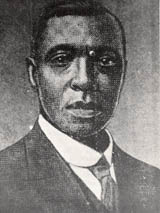
“The science of Astrology teaches us one great lesson and that is that God does not reject existing knowledge because it happens to be brought to light or belongs to heathen nations, he adopts and purifies it for he is the author of all wisdom.” Professor Cole
This treatise was first delivered by lecture to the Astrological Society of London in 1899 by Professor J A Abayomi Cole. Astrological Geomancy can be defined as an occult science of ancient Kemet that was eventually introduced and shared with other tribes all across the African continent and is still practiced within the tribal traditions today. It includes tribal divination, astronomical configurations, the zodiac signs, tarot, math and science calculations, etc., using the map of the heavens to accurately make individual and event predictions that are influenced by the magnetic planetary forces and its influences on the earth.
| Title | Astrological Geomancy in Africa |
| Author | J. A. Cole |
| Editors | Kali Sichen, Kali Sichen-Andoh |
| Edition | illustrated |
| Publisher | North Scale Institute Publishing Company, 1990 |
| ISBN | 0916299120, 9780916299125 |
| Length | 61 pages |
Extract
In those early days of the world’s history, when the gods associated with men and rendered them valiant help in all their struggles for existence, sacrifices were offered unto them. At these offerings they became so delighted that they came down from heaven in such great numbers that it was not possible to obtain sufficient meat to distribute amongst them.
Having cultivated a taste for flesh, and the worshippers not being able to supply all they demanded, the gods were therefore obliged to resort to various pursuits so that they might obtain food.
Ifa, the God of Divination, took to fishing. On a certain day Ifa returned from the sea hungry and exhausted, having caught no fish. He thereupon consulted the god Elegba what to do.
Elegba, in reply, said that there was near the forest a farm belonging to Orunga, the son of the goddess (Yemaja). It was planted by Odudura, the wife of Obatala (Heaven). It bore only sixteen nuts, and if Ifa can succeed to obtain the sixteen palm nuts from Orunga-who now owns the lands-he would, with them, teach him the art of divination, by which food will be secured for the gods without resorting to labour; for every one wishing to consult the Oracles will pay a goat, and knowing the anxiety of mankind to pry into the future, he was sure that the gods would thereby have more flesh than they would need, stipulating at the same time that the first choice of all such should be his.
Ifa at once proceeded to the farm of Orunga. He bargained for the sixteen palm nuts, promising in return for them to teach Orunga how to forecast the future, assuring him that by this knowledge he will become very rich, and at the same time be of great service to mankind.
Orunga went and consulted his wife, Orisabi, who agreed that they would part with the palm nuts, if by so doing they would become both rich and useful. Both of them set out to get the nuts, which they collected by the aid of monkeys. All, sixteen in number, were wrapped in a bundle of clothes, and Orisabi tied the bundle on her back in the manner in which babies are generally carried, and she with her husband took them to Ifa. Ifa received and took them to Elegba, who taught him, as he promised, the art of divination; Ifa in turn taught it to Orunga, who thus became the first Baba-alawo (i.e., Father of Mysteries).
Hence in all geomantic operations the Baba-alawoes use the common formula:
Orunga ajuba oh! – Orunga, I respect thee!
Orisabi ajubi oh! – Orisabi, I respect thee!
This accounts for the sixteen palm nuts used in Yoruba divination all corresponding to the twelve houses of the heavens + two geomantic witnesses + one geomantic judge + one grand judge obtained by the permutation of the judge, the fifteenth figure, with the figure of the first house, all equal to sixteen figures.
There are various methods of divination, either with sixteen stones taken from the stomach of an alligator, used largely by tribes in the interior of the Colony of Sierra Leone, or with sixteen ordinary stones, beans, palm nuts, or cowries.
